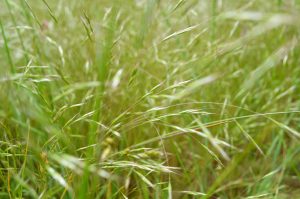Invasive species prevention requires advocacy at all levels of government. For National Invasive Species Awareness Week, we’re sharing success stories and advice from leaders across the nation.
Imagine you’ve eliminated wild parsnip from the property you manage, only to see it spreading from property beyond your borders. Or maybe you’ve successfully controlled an infestation, but you need more resources for follow-up monitoring and treatment.
Despite all your hard work, sometimes you need to get someone else involved—someone who has the decision making power to help you move forward. That decision maker could be your neighbor, a park manager, or even an elected official.
No matter who it is, you’ll be most successful at gaining support if you spend some time making an engagement plan.
So how do you do that?
The Engagement Plan: How to get support for your invasive species efforts
A team from University of Minnesota Extension recently created a split online and in-person curriculum called EmpowerU! Advocating Invasive Species Management, which guides people through developing and enacting an engagement plan to get support from decision makers.
In 2019, Wisconsin was one of a handful of states to pilot the curriculum with volunteers, landowners, and land managers. Our participants told us that the class helped them learn more in a matter of hours about how to engage decision makers than some of them had learned through decades of efforts on invasive species issues! Here are some tips from the course to consider as you form a plan to get support for your invasive species work:
"Participants told us that the class helped them learn more in a matter of hours about how to engage decision makers than some of them had learned through decades of efforts on invasive species issues!"
Anne Pearce Tweet
The Engagement Plan Process
1) Identify your issue
Answer these questions:
- What is your specific request for the decision maker?
- Why do you care about it, and how are you connected to this issue?
- Are you trying to get others to manage invasive species?
- Are you looking for a new policy or funding to support your work?
- Be as specific as possible.
2) Gather information
Before you approach a decision maker, you want to make sure you are well informed. Gather information about the species of interest, including known impacts and documented solutions for mitigating those impacts. Make sure to use reliable information sources.
Think about how the information may relate to your personal connection to the issue. However, don’t forget to consider other points of view.
3) Identify your decision maker
Do your research to determine who is in the best position to help you. Which organization, agency, or level of government should you approach? If your issue is about managing invasive species in a city park, you’ll get more traction contacting the parks department than contacting your senator! Learn what you can about your decision maker, including:
- the best way to reach them
- what motivates them
- and whether they’ve shown any interest in your issue before
4) Write questions for your decision maker
Based on your invasive species issue, the information you’ve gathered, and your decision maker, write three or more questions you plan to ask. Here are a few prompts for inspiration:
- Think about probing, open-ended questions that allow you to learn facts from your decision maker
- Get insight into their opinions, feelings, and beliefs related to your issue
- Get them to express their hopes in a scenario with no time/funding limitations; and allow them to express their concerns about your issue.
"Think about probing, open-ended questions that allow you to learn facts from your decision maker."
Anne Pearce Tweet
5) Consider how to frame your issue
Based on the issue you identified and what you know about your decision maker, consider how to frame your issue in a way that will best engage them. For instance, you might be most concerned about the ecological impacts of an invasive species, but a parks manager might primarily be concerned with health and safety of park users.
How can you frame your issue around their priorities and still work toward your goal?
6) Engage your decision maker
You can engage a decision maker in many ways, such as meeting in person, writing a letter to the editor, or attending a public meeting. Determine what works best for your issue. Maybe you feel comfortable on your own, or maybe you want to gather a team of people to help with your issue.
Make sure you acknowledge the time and effort your decision maker contributes to your issue!
Engagement is an ongoing process, and you’ll need to revisit the steps above as you learn more about your decision maker, your issue, and the possible outcomes of your engagement.
Want to learn more?
While the tips above will help you plan engagement with a decision maker, there’s so much more to learn to make your engagement successful!
To access or learn more about the EmpowerU! curriculum, please reach out to Angela Gupta at University of Minnesota Extension ().
Good luck out there, and be sure to share your successes so we can all learn how to better advocate for action on invasive species issues!
Get involved with the North American Invasive Species Management Association:
- Join NAISMA to share your story with peers across the country who are enacting their own invasive species engagement plans.
- Join our Legislative Committee to construct responses to national and international invasive species policy issues as they arise, write position papers, and meet with other groups working on regional, national, or international policy issues that can have an impact on invasive species management activities.

Anne Pearce
Anne Pearce coordinates the Wisconsin First Detector Network, a citizen science program that empowers people to take action against invasive species through education and volunteer opportunities. She supports WIFDN’s volunteer citizen scientists and develops and facilitates online and in person trainings.




